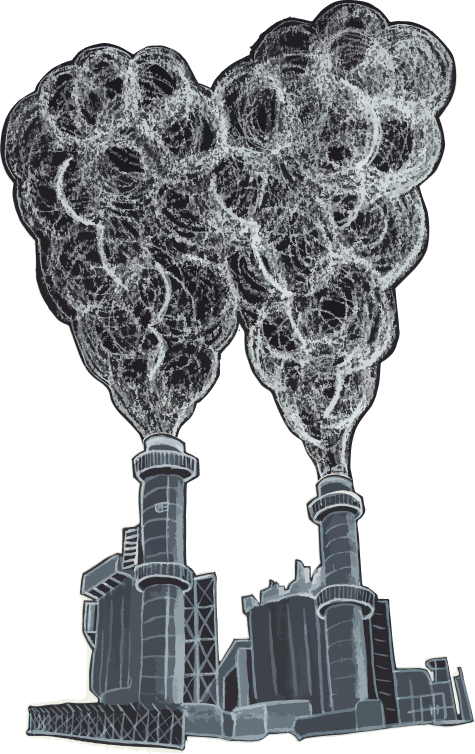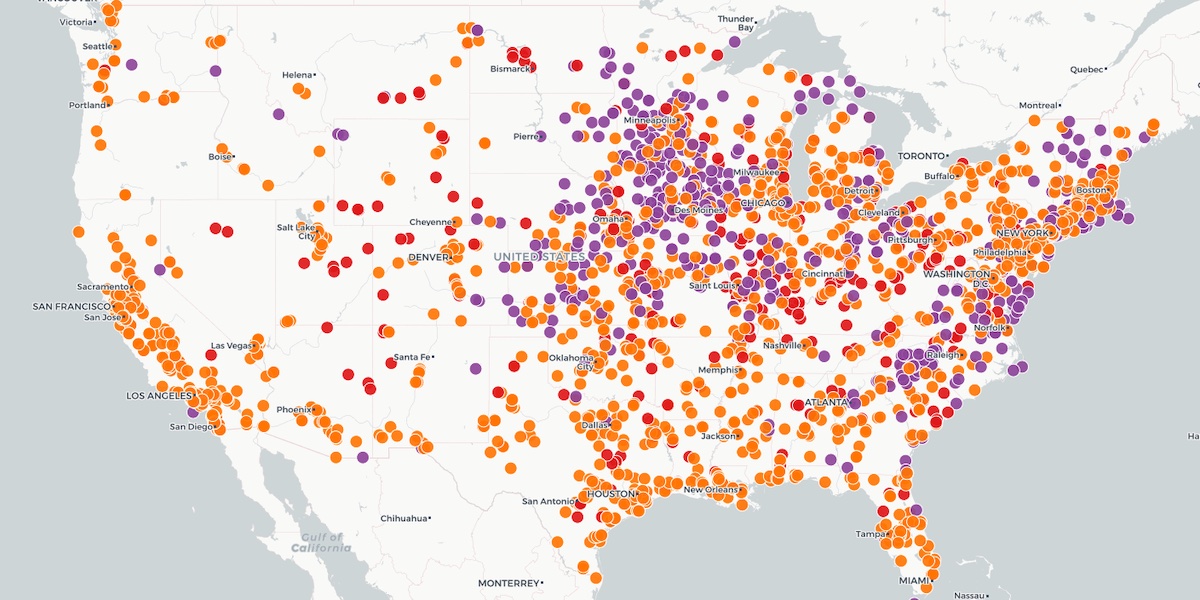Kentucky
Back to mapTo get to zero by 2050, Kentucky must cut emissions by 3.7% a year
Emissions in Kentucky
Million metric tons of carbon dioxide (CO2) [?] equivalent (MTCO2e [?]) emissions
Note: Grey area indicates missing data due to processing delays.
Source: WRI, Mar 2021
This is how we're going to do it
- Boilers and furnaces with heat pumps [?]
- Gas stoves with electric induction stoves [?]
- No-till farming to keep CO2 in the soil
- Capturing methane leaks from landfills
- Capturing CO2 to make emissions-free concrete
- Burning green hydrogen to make emissions-free steel
- Plugging methane leaks from gas pipelines
Decarbonize Our Buildings
4% of Kentucky's climate pollution comes from buildings.
We burn fossil fuels to heat our air, water, and food.
To cut this pollution...
Let's electrify our heat!
We'll replace...
...in all of Kentucky's 2.4 million buildings.
In fact, 51% of appliances in buildings in Kentucky are already fossil fuel free!
That means we only need to electrify the remaining 1.2 million dirty buildings in Kentucky. That's around 45,000 per year.
Source: Microsoft, Mar 2021; NREL, Dec 2021Electrifying all buildings cuts 4% of the pollution.
Decarbonize Our Transport
24% of Kentucky's pollution comes from cars, trucks, trains, and planes.
But mostly from cars.
To cut this pollution,
your next car must be electric.
Or consider going car-free with public transit, bikes/e-bikes, car share, or other alternatives!
There are 1.6 million vehicles in Kentucky and 3,000 are already electric (0.2% of the total).
We need to electrify (or replace) the remaining 1.6 million gas-powered vehicles. That's around 61,000 a year.
Source: DOT, Feb 2021Electrifying all transportation cuts 24% of the pollution.
Decarbonize Our Power
44% of Kentucky's pollution comes from burning coal, gas, and oil to make power.

To cut this pollution...
Put solar panels on your roof!
Then, we'll replace all fossil fuel power plants with solar and wind farms.

...and find good jobs for those workers.
Current Fossil Fuel Power Plants in Kentucky
13 coal plants
Paradise
Muhlenberg County
3,718 MW
Trimble County
Trimble County
2,594 MW
Ghent
Carroll County
2,226 MW
Shawnee
McCracken County
1,750 MW
E W Brown
Mercer County
1,748 MW
Mill Creek
Jefferson County
1,717 MW
H L Spurlock
Mason County
1,609 MW
East Bend
Boone County
772 MW
R D Green
Webster County
586 MW
D B Wilson
Ohio County
509 MW
Elmer Smith
Daviess County
445 MW
HMP and L Station 2
Henderson County
405 MW
John S. Cooper
Pulaski County
344 MW
11 gas plants
Smith Generating Facility
Clark County
1,663 MW
Cane Run
Jefferson County
1,468 MW
Riverside Generating Company
Lawrence County
1,150 MW
Big Sandy
Lawrence County
1,097 MW
Marshall County
Marshall County
688 MW
Bluegrass Generating Station
Oldham County
624 MW
Paddy's Run
Jefferson County
227 MW
Paducah Power Systems Plant 1
McCracken County
120 MW
Haefling
Fayette County
62 MW
DTE Calvert City, LLC
Marshall County
27 MW
Zorn
Jefferson County
18 MW
1 oil plant
Paris (KY)
Bourbon County
12 MW
But wait!
It's not enough to replace our power plants with wind and solar farms.
To power our electric cars and buildings, we need two times the electricity we have today.
In all, we'll need to build 6,000 megawatt (MW) [?] of wind power and 7,000 MW of solar power.
Since the average wind turbine provides 2.75 MW of peak capacity, Kentucky would need to install about 2,000 turbines.
Since Kentucky already has 0 MW of wind and 12 MW of solar, that's 6,000 MW of wind power we need to build and 7,000 MW of solar power. That's around 227 MW of wind power and 257 MW of solar power a year.
Source: EIA, Apr 2022Decarbonizing all dirty power cuts 44% of the pollution.
And gives us zero-emissions power we need to eliminate pollution from buildings and cars!
Other Emissions
The last 28% of Kentucky's climate pollution comes from other sources...
This includes farming, landfills, industry, and leaks from gas pipelines.
There's no one solution to solve these problems, but there are lots of great ideas:
That doesn't mean there's no solution, it just means that clean electrification [?] doesn't help with these problems, and you could fill a whole book with covering all of them. We need to encourage our politicians to invest in researching new solutions and implementing existing solutions to these problems!
Ready to do your part?
Learn how to electrify your own machines and pass local policy to electrify the rest
Take Action